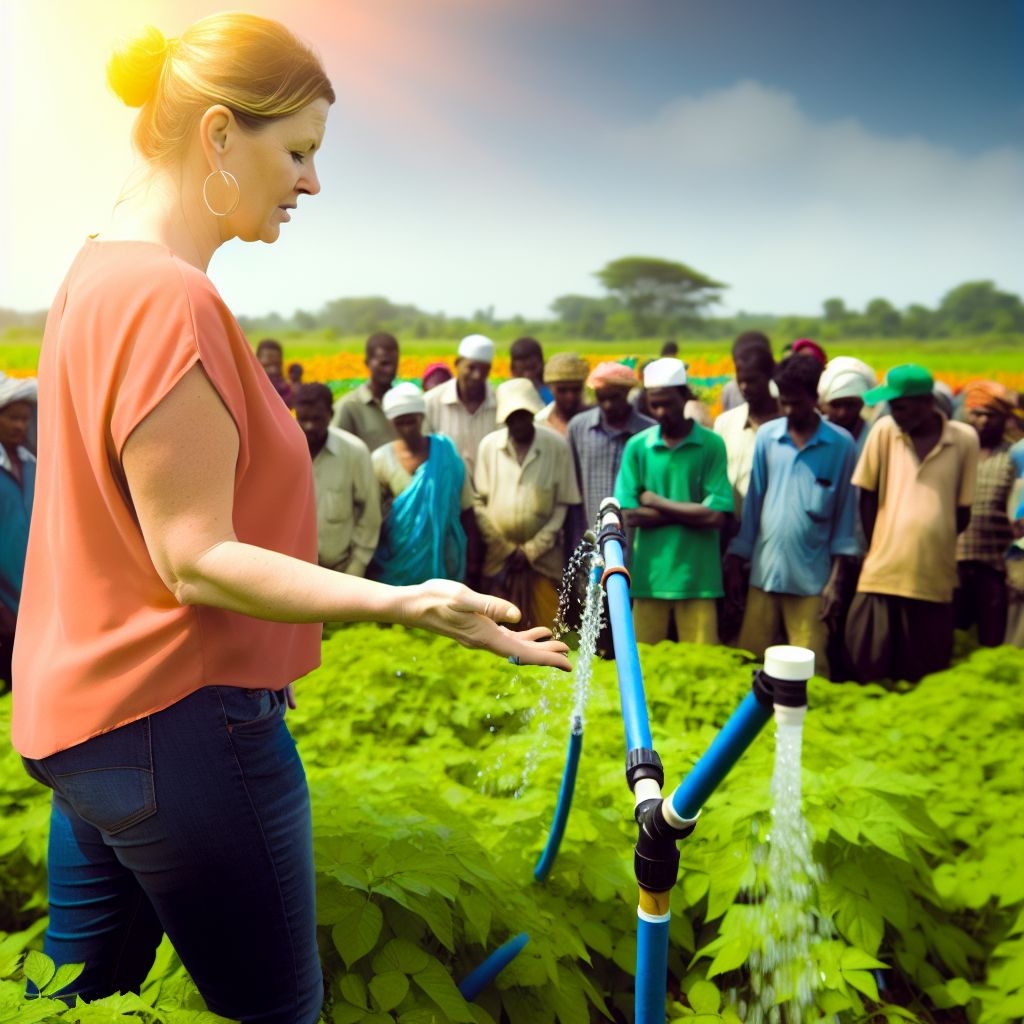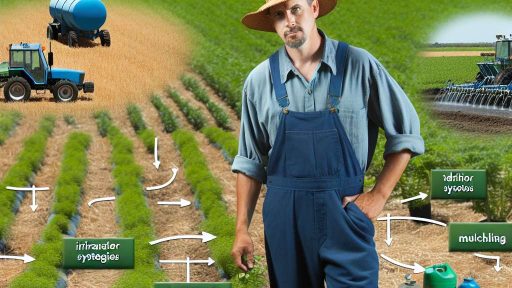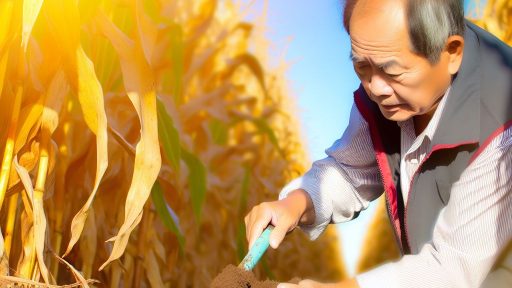Introduction to Sustainable Irrigation
Sustainable irrigation plays a critical role in land investment strategies.
It focuses on the effective management of water resources.
This practice helps maintain soil health and agricultural productivity.
Moreover, it addresses the growing challenges of climate change.
Many investors overlook irrigation’s importance in their long-term plans.
However, integrating sustainable practices protects investments against risks.
In addition, it promotes resilience in agricultural operations.
Importance of Water Management
Water is a finite and valuable resource in agriculture.
Efficient irrigation systems minimize water waste significantly.
By using advanced techniques, farmers can optimize crop yields.
Techniques such as drip irrigation conserve water effectively.
Additionally, capturing rainwater enhances sustainability.
Economic Benefits of Sustainable Irrigation
Investing in sustainable irrigation yields long-term financial gains.
Crops grown under optimal conditions tend to be more profitable.
Furthermore, these systems can reduce operational costs over time.
Transform Your Agribusiness
Unlock your farm's potential with expert advice tailored to your needs. Get actionable steps that drive real results.
Get StartedSustainable practices attract environmentally-conscious consumers.
This can lead to premium pricing for sustainably grown products.
Environmental Impact and Sustainability
Sustainable irrigation practices contribute positively to the environment.
They reduce runoff and prevent soil erosion and nutrient depletion.
This approach enhances ecosystem services, like pollination and biodiversity.
Moreover, sustainable irrigation can mitigate drought effects.
Adopting these practices plays a significant role in climate adaptability.
Policy and Regulatory Considerations
Governments increasingly support sustainable irrigation through incentives.
Policies often encourage water conservation and efficient usage.
Investors should stay informed about these regulations and opportunities.
Participating in sustainable initiatives can enhance public image.
Additionally, compliance with regulations ensures long-term viability.
The Environmental Benefits of Sustainable Irrigation Methods
Conservation of Water Resources
Sustainable irrigation methods significantly reduce water usage.
These techniques minimize wastage while maximizing efficiency.
Technologies like drip irrigation target specific plant areas directly.
Moreover, this approach ensures that water is conserved over time.
Reduction of Soil Erosion
By using sustainable irrigation, farmers can lessen soil erosion.
Traditional methods often lead to runoff and nutrient loss.
In contrast, sustainable practices maintain soil integrity.
This preservation helps promote healthy crop yields year after year.
Improvement of Water Quality
Sustainable irrigation contributes to cleaner water sources.
It reduces the risk of chemical runoff into nearby waterways.
Consequently, this approach benefits aquatic ecosystems significantly.
Healthy water quality supports both local wildlife and agricultural needs.
Showcase Your Farming Business
Publish your professional farming services profile on our blog for a one-time fee of $200 and reach a dedicated audience of farmers and agribusiness owners.
Publish Your ProfileSupport for Biodiversity
Implementing sustainable irrigation encourages diverse plant life.
It creates habitats that foster various species in agricultural areas.
Such biodiversity enhances resilience against pests and diseases.
Furthermore, it supports pollinator populations essential for food production.
Long-Term Soil Health
Sustainable methods maintain the structure and fertility of the soil.
They promote natural processes that enrich soil health over time.
This leads to improved productivity and reduced dependency on fertilizers.
Healthy soil ultimately supports sustainable agricultural practices.
Adaptation to Climate Change
Sustainable irrigation practices help farmers adapt to climate variability.
These methods allow for more efficient use of limited water supplies.
They also help mitigate drought-related risks in agriculture.
Farmers can better secure food availability in uncertain climates.
Economic Advantages of Sustainable Irrigation for Long-Term Land Investment
Increased Crop Productivity
Sustainable irrigation significantly boosts crop yields.
It allows for consistent water supply throughout the growing season.
Moreover, proper irrigation techniques enhance soil moisture retention.
This ultimately leads to healthier crops and reduced losses.
Cost Efficiency
Implementing sustainable irrigation practices reduces water use.
This minimizes costs associated with water procurement.
Investing in efficient systems lowers energy consumption.
Thus, operational costs decline over the long term.
Risk Management
Sustainable irrigation practices help manage drought risks effectively.
They ensure a reliable water supply even in adverse conditions.
This stability attracts investors seeking secure agricultural ventures.
Consequently, risk mitigation leads to improved land value.
Environmental Stewardship
Adopting sustainable irrigation promotes environmental health.
It reduces runoff and prevents soil erosion.
This practice preserves the local ecosystem and water sources.
Investors benefit from an enhanced public image through environmental responsibility.
Enhanced Market Appeal
Land utilizing sustainable irrigation attracts eco-conscious buyers.
It offers products that meet growing consumer demand for sustainability.
Consequently, market appeal increases for sustainably farmed produce.
Higher demand typically translates to better pricing power for farmers.
Gain More Insights: Climate Change Regulations Affecting Agricultural Real Estate Buyers
Case Studies Showcasing Successful Implementation of Sustainable Irrigation
Innovative Practices in California
California farmers adopted drip irrigation systems to conserve water effectively.
This method allows for precise water delivery directly to plant roots.
As a result, crop yields increased significantly, benefiting both farmers and the environment.
Additionally, these practices reduced water usage by about 30% compared to traditional methods.
Success in Israel’s Agriculture
Israel is a pioneer in sustainable irrigation technology.
The country utilizes advanced drip irrigation and wastewater recycling techniques.
Farmers gain access to over 90% efficiency in water use through these innovations.
Showcase Your Farming Business
Publish your professional farming services profile on our blog for a one-time fee of $200 and reach a dedicated audience of farmers and agribusiness owners.
Publish Your ProfileThis approach has transformed arid landscapes into productive farmland.
Thanks to these efforts, agricultural exports have also surged in recent years.
Community Initiatives in Kenya
In Kenya, smallholder farmers have embraced rainwater harvesting systems.
These systems capture and store rainwater for dry seasons.
As a result, farmers can maintain crop growth even during droughts.
Community training programs further enhance the effectiveness of these systems.
Consequently, food security has improved for these rural populations.
Large Scale Implementation in Australia
Australia’s large farms are shifting towards sustainable irrigation methods.
They use technologies like moisture sensors and automated irrigation systems.
This transition minimizes water waste while maximizing yield potential.
Moreover, it helps farmers adapt to changing climate conditions effectively.
The positive impacts extend to local ecosystems by reducing runoff.
Lessons from Brazil’s Agroforestry
Brazil has integrated agroforestry practices to enhance its irrigation systems.
This approach promotes synergies between trees and crops, improving water retention.
It also enhances biodiversity and protects soils from erosion.
Farmers report better resilience against climate variability.
These practices have led to sustainable land use while boosting rural economies.
You Might Also Like: Water-Saving Irrigation Techniques for Sustainable Agricultural Growth
Challenges and Barriers to Adopting Sustainable Irrigation Practices
Initial Cost Investments
Implementing sustainable irrigation systems often requires significant upfront costs.
This financial barrier discourages many farmers from transitioning to new methods.
Additionally, access to affordable financing options can be limited.
Consequently, many landowners hesitate to invest in sustainable technologies.
Lack of Knowledge and Training
Farmers frequently lack adequate knowledge about sustainable irrigation techniques.
This gap in knowledge limits their ability to implement effective practices.
Training programs often lag behind technological advancements in agriculture.
As a result, farmers miss opportunities to improve efficiency and sustainability.
Regulatory and Policy Obstacles
Government regulations can complicate the adoption of sustainable irrigation.
Some policies may favor traditional methods, creating disincentives for change.
Moreover, inconsistent regulations across regions lead to uncertainty.
This inconsistency can hinder informed decision-making for land investments.
Infrastructure and Resource Limitations
Many regions lack the necessary infrastructure for efficient irrigation systems.
For instance, inadequate water management systems exacerbate water scarcity issues.
Moreover, insufficient access to technology can stifle innovation.
Overall, these resource limitations create significant barriers for farmers.
Market Dynamics and Consumer Demand
Market demand often favors conventional farming methods over sustainable practices.
This preference can lead to lower profit margins for sustainable growers.
Additionally, lack of consumer awareness about the benefits of sustainability plays a role.
Thus, farmers face market challenges that discourage sustainable investment.
Uncover the Details: Biodiversity Benefits of Integrating Agroforestry in Rural Properties

Technological Advancements in Sustainable Irrigation Systems
Introduction to Sustainable Irrigation
Sustainable irrigation techniques ensure efficient water usage in agriculture.
Showcase Your Farming Business
Publish your professional farming services profile on our blog for a one-time fee of $200 and reach a dedicated audience of farmers and agribusiness owners.
Publish Your ProfileThey prevent wastage and promote environmental conservation.
Smart Irrigation Technologies
Smart irrigation systems utilize sensors to monitor soil moisture levels.
These sensors automatically adjust water supply according to plant needs.
This technology saves substantial amounts of water over traditional methods.
Drip Irrigation Systems
Drip irrigation delivers water directly to plant roots.
This method minimizes evaporation and runoff significantly.
Farmers report improved crop yields with lower water usage.
Rainwater Harvesting Techniques
Rainwater harvesting systems collect and store rainwater for irrigation.
This practice reduces reliance on ground or surface water sources.
Moreover, it helps conserve local water resources effectively.
Use of Drones in Irrigation Management
Drones are revolutionizing the monitoring of irrigation systems.
They provide detailed aerial views of crops and irrigation patterns.
This information helps optimize water distribution across fields.
Case Studies and Applications
Several farms have successfully implemented sustainable irrigation technologies.
For example, Green Acres Farm in California uses smart irrigation.
Their water savings have led to increased profit margins.
Future Trends in Sustainable Irrigation
Emerging technologies promise even greater efficiency in irrigation.
AI-powered systems may soon predict water needs based on multiple factors.
These advancements will further enhance the sustainability of agriculture.
Explore Further: How Changing Rainfall Patterns Influence Agricultural Land Prices
Policy and Regulatory Frameworks Supporting Sustainable Irrigation
Importance of Policy Frameworks
Effective policies drive sustainable irrigation practices.
They create standards for resource management.
Additionally, policies promote water conservation.
Ultimately, these frameworks enable long-term agricultural sustainability.
Regulatory Initiatives
Regulatory initiatives play a crucial role in sustainable irrigation.
They ensure compliance with water usage standards.
Furthermore, they govern land use and agricultural practices.
These regulations often include water rights allocation.
Additionally, they may impose restrictions on chemical usage.
Collaboration between Stakeholders
Collaboration between government and farmers enhances policy effectiveness.
Governments can gather practical insights from farmers’ experiences.
This partnership leads to more relevant and effective policies.
Moreover, stakeholders can co-develop sustainable irrigation technologies.
Incentives for Sustainable Practices
Incentives encourage farmers to adopt sustainable irrigation methods.
Financial assistance aids in the transition to efficient systems.
Grants can support the implementation of new technologies.
Tax breaks may reward water-saving measures.
Education and Training Programs
Education programs raise awareness of sustainable irrigation.
Workshops can teach farmers about efficient water use.
Training programs help implement new farming practices successfully.
Showcase Your Farming Business
Publish your professional farming services profile on our blog for a one-time fee of $200 and reach a dedicated audience of farmers and agribusiness owners.
Publish Your ProfileAdditionally, access to resources improves knowledge sharing.
Monitoring and Evaluation Mechanisms
Effective monitoring ensures adherence to regulations.
Evaluation mechanisms assess the impact of irrigation policies.
Data collection helps identify areas for improvement.
Regular assessments promote accountability among stakeholders.
The Role of Community Involvement in Sustainable Irrigation Initiatives
Importance of Local Engagement
Community involvement is vital for effective sustainable irrigation initiatives.
Active participation fosters a sense of ownership among residents.
When locals engage, they contribute valuable insights and solutions.
Building Trust and Collaboration
Trust is essential for successful irrigation programs.
Engaging communities promotes transparency in decision-making.
Collaboration encourages diverse perspectives and shared goals.
Educational Outreach
Education plays a key role in sustainable irrigation efforts.
Workshops and seminars raise awareness about best practices.
Informing community members leads to informed decision-making.
Utilization of Local Resources
Communities often have local knowledge of water resources.
This knowledge can significantly enhance irrigation management.
Utilizing local expertise promotes sustainable practices.
Case Studies of Successful Initiatives
Many communities have successfully implemented sustainable irrigation.
In Cedar Valley, collaboration led to reduced water waste.
The initiative improved crop yield and benefited local farmers.
Challenges and Solutions
Community involvement isn’t without challenges.
Resistance to change can hinder progress.
However, addressing concerns through dialogue fosters acceptance.
Future Directions
Continued involvement is critical for long-term success.
Encouraging youth participation builds a sustainable future.
Ultimately, a united community can achieve effective irrigation solutions.
Additional Resources
Climate Change Impacts on Agriculture and Food Supply | US EPA
Managing Water and Farmland Transitions in the San Joaquin …




